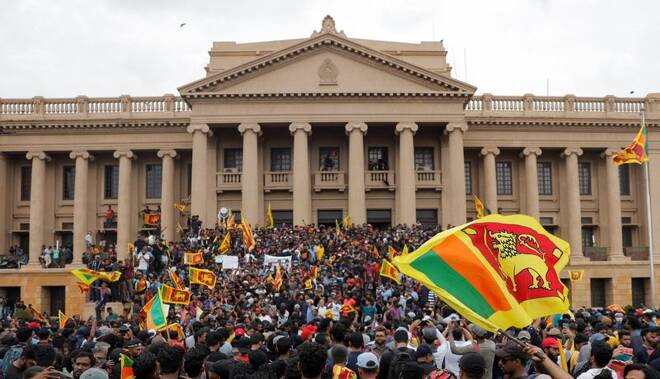Advertisement
Advertisement
How Sri Lankan protests unfolded
By:
(Reuters) - A deep financial crisis has left Sri Lanka struggling to pay for imports of food, medicine and fuel and brought thousands of protesters on to the streets. On Saturday, President Gotabaya Rajapaksa told the speaker of parliament he would step down next week.
(Reuters) – A deep financial crisis has left Sri Lanka struggling to pay for imports of food, medicine and fuel and brought thousands of protesters on to the streets. On Saturday, President Gotabaya Rajapaksa told the speaker of parliament he would step down next week.
Here are some of the key developments in the crisis:
March 31, 2022: Demonstrators march to Rajapaksa’s private residence to protest over worsening economic conditions.
April 3: Rajapaksa dissolves the cabinet, which includes his younger brother Basil Rajapaksa as finance minister, but elder brother Mahinda Rajapaksa continues as prime minister.
April 9: Protests escalate, with sit-in demonstrations outside Rajapaksa’s office aimed at removing the president to pave the way for political reforms.
May 9: Following widespread clashes between pro- and anti-government protesters, Prime Minister Mahinda Rajapaksa resigns. Countrywide violence leaves nine dead and about 300 injured.
July 9: President Gotabaya Rajapaksa informs the parliamentary speaker that he plans to step down on July 13, after protesters storm into the official presidential residence. Prime Minister Ranil Wickremesinghe says he is willing to resign too.
(Reporting by Uditha Jayasinghe; Editing by Rupam Jain and Alex Richardson)
About the Author
Reuterscontributor
Reuters, the news and media division of Thomson Reuters, is the world’s largest international multimedia news provider reaching more than one billion people every day. Reuters provides trusted business, financial, national, and international news to professionals via Thomson Reuters desktops, the world's media organizations, and directly to consumers at Reuters.com and via Reuters TV. Learn more about Thomson Reuters products:
Did you find this article useful?
Latest news and analysis
Advertisement
